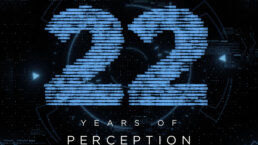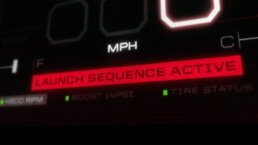The April 2018 issue of Cinefex featured a comprehensive behind the scenes article on the making of Black Panther. Perception’s Chief Creative Director John LePore and Art Director Russ Gautier were honored to be part of this conversation. Below are the excerpts that focused on Perception’s design work throughout the film.
—
High technology is as important to Wakanda as tribal heritage. Acting as a technology consultant, Perception researched cutting-edge scientific trends. “There’s been some really interesting ideas coming from the Massachusetts Institute of Technology in the tangible media department,” said Perception chief creative director John LePore. “They’re looking at taking pixels and making them physical elements. Other exciting tests have been going on using ultrasonic sound waves to make things like styrofoam particles levitate into very specific positions.” Perception’s research also embraced cymatics — a ‘modal vibration phenomenon’ by which sound waves can be translated into physical form by coating a vibrating surface with fluids or particulates.
From this conceptual melting pot grew the idea of ‘vibranium sand’ — a material which, when ultrasonically stimulated, can sculpt itself into any 3D form. “To us, this was the hologram for Wakanda,” LePore stated. “Except it is a physical element — you can touch it, hold it, feel it crumble in your hands. This grounds it to reality, and also to the setting of Africa. It’s a technology we’ve never really seen before, and feels so much more advanced than just shapes that are projected out of blue glowing light.”
“We explored the different ways this technology could function using 3D animation and Houdini sims,” added Perception art director Russ Gautier. “We even built an actual sandbox here in the office — which was horrifically messy! We covered action figures in sand and tried to figure out how you interact with a sand interface.” In early iterations of the concept, vibranium sand constructions mimicked real-world surface textures by emitting light or receiving projections. Ultimately, the sand appeared on screen only in its natural, silvery-black state.
Black Panther begins with a history of Wakanda told through the medium of constantly-shifting vibranium sand. Perception prepared an animatic of the 2,500-frame sequence; Storm VFX executed the final shots…
Bookending the film, Perception crafted a main on-end title sequence riffing off the vibranium sand concept, blending characters and moments from the film with traditional African designs and cymatic patterns. Working in Maxon Cinema4D, Insydium X-Particles and Houdini, the team extracted waveforms from the accompanying music track and used them to influence particle simulations — the sand literally boogied to the beat.
…Effects artists sluiced moving Wakandan glyphs down the walls of the lab hallway, conjuring a blend of art installation and data stream. Perception designed a user interface for a medical computer inside the lab, abandoning conventional rectangular windows for hexagons and ‘Voronoi’ tesselations — mathematically-derived organic patterns…
…Each suit is activated by an ornate necklace which scans the user’s bodyand dispenses tiny nanites that coalesce into a form-fitting outfit. Perceptionundertook initial design and motion studies to develop the suiting-up effect,which Method Studios carried forward in Houdini.
Experience Perception
Perception is an Emmy nominated design lab pioneering the visionary process of Science Fiction Thinking to architect the future. We divide our time equally between the parallel worlds of science-fiction—working with trailblazing filmmakers, and science-fact—collaborating with the world’s most innovative technology brands.


